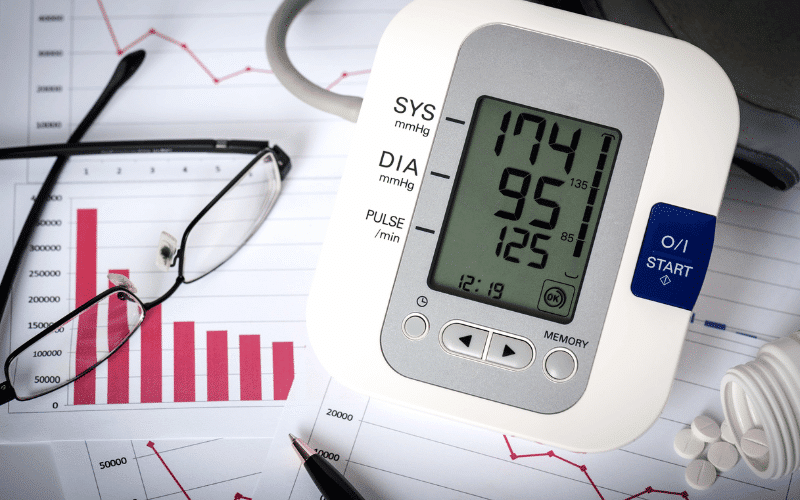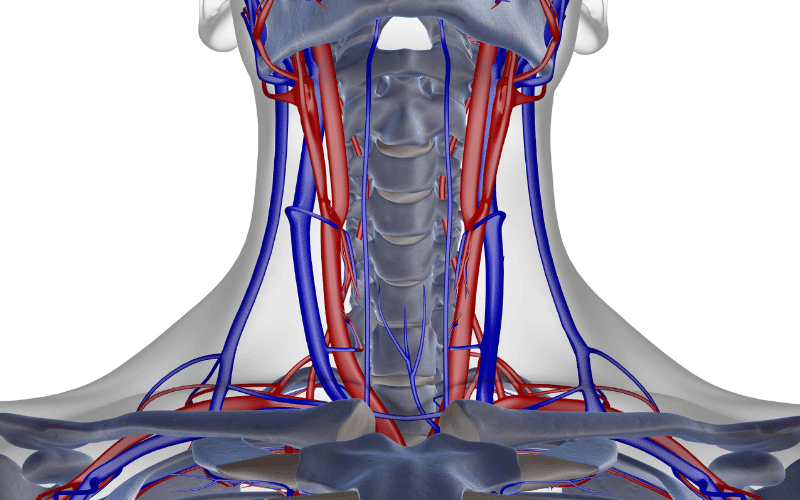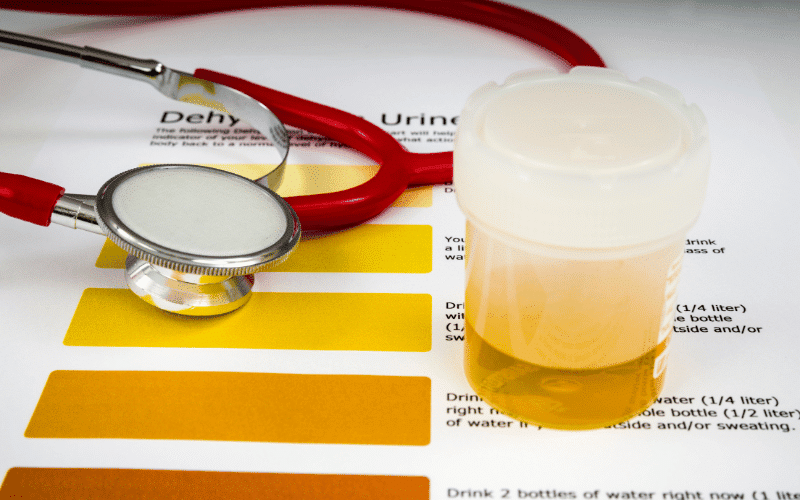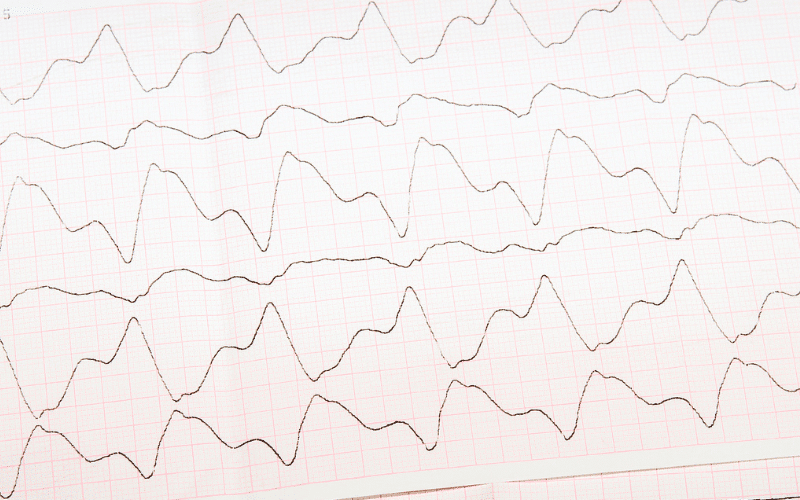Introduction: The Intricacies of Hypervolemia

When the body is in a state of equilibrium, all systems function at their optimum. This balance, however, can be disrupted, leading to conditions that could pose severe health risks if not promptly addressed. One such condition is hypervolemia, also known as fluid overload, a medical condition that occurs when there’s an excess volume of fluid, particularly blood, in the body.
Hypervolemia is a condition that often flies under the radar, quietly disrupting the body’s natural balance. Despite its often insidious onset, its consequences can be significant if not addressed promptly. It’s a condition that can occur in both acute and chronic forms, each presenting its unique array of signs and symptoms.
The science behind hypervolemia is simple yet intriguing. At its core, it stems from the body’s inability to maintain its fluid balance. The human body is designed to function with a specific amount of water, blood, and other fluids. When this balance is disrupted, such as when there’s an excess volume of fluid or blood, health complications may arise.
The primary culprits that trigger hypervolemia are often related to kidney malfunction or heart problems, but certain medications can also play a role. The kidneys, tasked with filtering out waste and excess fluid from the bloodstream, may sometimes fail to perform their job efficiently, leading to fluid overload. Heart conditions can also impact how effectively the body manages fluids, contributing to the development of hypervolemia.
But how do you know if you have hypervolemia? What are the telltale signs you need to look out for? While hypervolemia can manifest in various ways, there are 10 key symptoms that could hint at this condition’s presence. Knowing these signs can guide you to seek medical attention promptly, making a significant difference in managing the condition.
Symptom 1. Swelling in the Legs, Ankles, and Feet: A Classic Indicator of Hypervolemia

Edema, or swelling, is often the first visible sign of hypervolemia. It typically manifests in the lower extremities, such as the legs, ankles, and feet. This swelling results from fluid accumulating in the body tissues, causing them to expand and create a noticeable puffiness or enlargement.
While swelling can occur due to various conditions, it’s particularly significant in hypervolemia because it directly results from the body’s inability to manage its fluid levels effectively. When the kidneys are not adequately filtering out excess fluid, or the heart isn’t pumping blood efficiently, the fluid can build up in the body tissues, leading to edema.
Edema associated with hypervolemia often begins subtly. You might notice your shoes feeling tighter than usual, or rings becoming difficult to remove. Over time, the swelling can become more apparent, making it difficult to move the affected body parts comfortably. This can significantly impact mobility, causing discomfort and inconvenience in performing daily tasks.
But how can you differentiate normal swelling from edema indicating hypervolemia? While temporary swelling can occur due to various reasons like prolonged standing or sitting, it typically resolves with rest and elevation. In contrast, edema related to fluid overload does not improve with these measures and often worsens throughout the day.(1)
Symptom 2. Rapid Weight Gain: A Silent Sign of Fluid Overload

A sudden increase in weight over a short period is a telltale sign of fluid overload. This is not your typical weight gain from overeating or lack of exercise. It’s a swift, unexplained increase that could indicate your body is retaining more fluid than it should.
When the body experiences fluid overload, the extra fluid contributes to the overall body weight. This weight gain can happen quickly, sometimes within a few days or even overnight. It can be alarming, especially when it occurs without a change in dietary habits or physical activity levels.
However, weight fluctuation is a part of normal body function, and minor weight changes are common. These can result from various factors, including food intake, hydration levels, and physical activity. But if you notice a sudden increase of more than a couple of pounds within a few days, it’s worth paying attention to.
This rapid weight gain due to fluid overload is often accompanied by other signs of hypervolemia. These may include swelling, particularly in the legs, ankles, and feet, as well as shortness of breath, and bloating. Noticing these accompanying signs can provide further clues that the weight gain might be due to fluid overload. (2)
Symptom 3. Shortness of Breath: A Troubling Consequence of Hypervolemia

Shortness of breath, also known as dyspnea, is another symptom that can hint at fluid overload. When there’s too much fluid in the body, the excess can accumulate in different areas, including the lungs. When the lungs are affected, it can cause difficulty breathing, a symptom that should never be ignored.
This shortness of breath can present in various ways. You might find yourself gasping for air after minor physical activity or even while resting. It can feel like you can’t get enough air into your lungs, leading to feelings of anxiety and restlessness. This can be particularly noticeable during activities that you previously handled with ease, indicating a change in your lung function.
But why does fluid overload lead to breathing difficulties? The answer lies in the basic function of the lungs. These essential organs are responsible for oxygenating the blood and removing carbon dioxide – a waste product of cellular metabolism. When the lungs are filled with fluid, they can’t perform these functions effectively, leading to decreased oxygen levels in the blood and subsequent shortness of breath. (3)
Symptom 4. High Blood Pressure: An Overlooked Manifestation of Fluid Overload

High blood pressure, or hypertension, is another sign that could indicate hypervolemia. When there’s an excessive amount of fluid in the blood vessels, it creates additional pressure on the vessel walls – leading to high blood pressure.
Hypertension in the context of fluid overload is a response to the increased volume of blood that the heart needs to pump. The more fluid there is, the harder the heart has to work to circulate the blood, leading to increased pressure within the arteries. Over time, this can stress the heart and blood vessels, leading to serious health complications if not managed appropriately.
However, high blood pressure can be a silent condition, often presenting no noticeable symptoms. For many people, the first indication of hypertension is a high reading on a blood pressure monitor. Regular check-ups are vital to detect and manage high blood pressure before it leads to more serious health issues.
While hypertension can occur due to various factors, including genetics, lifestyle factors, and underlying health conditions, sudden or unexplained high blood pressure could be a sign of fluid overload. (4)
Symptom 5. Distended Neck Veins: A Visual Clue of Hypervolemia

The presence of distended neck veins is a visible sign that may indicate fluid overload. This symptom appears as swollen or engorged veins in the neck, often noticeable when the individual is standing upright or lying down without a pillow.
The science behind this symptom lies in the circulatory system’s response to fluid overload. When there’s an excessive amount of fluid in the body, the heart has to work harder to pump the increased volume of blood. This leads to higher pressure within the blood vessels, causing the veins to expand or distend – a phenomenon that is often visible in the neck veins.
Distended neck veins can be easily observed, providing a visual clue that something might be amiss. However, it’s important to note that they can also occur due to various other conditions, including heart and lung diseases. Therefore, while distended neck veins can suggest fluid overload, they should be evaluated in conjunction with other symptoms to make a more accurate diagnosis.
The appearance of distended neck veins can vary among individuals. For some, they might appear as a subtle swelling, while for others, they might be noticeably engorged. They can be more apparent during physical exertion or straining and may recede during rest. (5)
Symptom 6. Bloating and a Feeling of Fullness: The Uncomfortable Effects of Fluid Overload

Bloating and a feeling of fullness can be another symptom of hypervolemia. When there’s an excess amount of fluid in the body, it can build up in the abdominal area, causing bloating or a feeling of fullness. This can lead to discomfort and changes in appetite, making it a symptom that’s hard to ignore.
Bloating in the context of hypervolemia is not the typical bloating you might experience after a large meal or due to a digestive issue. It’s a persistent, often uncomfortable sensation that does not improve with time. It can be accompanied by visible swelling in the abdomen, making clothes feel tighter than usual.
But why does fluid overload lead to bloating? The answer lies in the body’s response to excess fluid. When the kidneys can’t effectively filter out the extra fluid, or the heart isn’t pumping blood efficiently, the fluid can accumulate in different body areas, including the abdomen. This leads to bloating and a feeling of fullness. (6)
Symptom 7. Changes in Urination: An Often Overlooked Sign of Hypervolemia

Changes in urination patterns can be an important sign of fluid overload. Typically, with hypervolemia, the frequency and volume of urination may increase as the body tries to eliminate the excess fluid. Alternatively, decreased urine output might also indicate hypervolemia, particularly in severe cases where the body is conserving fluid due to impaired kidney function.
An increase in urination, also known as polyuria, can present as frequent trips to the bathroom, often with a significant amount of urine each time. This is the body’s attempt to get rid of the extra fluid, leading to increased urine production. It’s important to note that this increased urination often occurs during the night, leading to nocturia, or the need to wake up several times to urinate.
On the other hand, decreased urine output, known as oliguria, can indicate that the body is retaining fluid due to impaired kidney function. This can occur in more severe cases of hypervolemia, where the kidneys are unable to effectively filter and remove excess fluid. (7)
Symptom 8. Fatigue and Weakness: The Exhausting Reality of Fluid Overload

Fatigue and weakness are common symptoms of hypervolemia, though they’re often overlooked. When the body has too much fluid, it places extra strain on the heart and other organs, leading to a feeling of constant tiredness or lack of energy.
Fatigue in the context of hypervolemia is not just the typical tiredness you might feel after a long day or lack of sleep. It’s a persistent, overwhelming sense of exhaustion that doesn’t improve with rest. It can be debilitating, impacting your ability to perform daily tasks and engage in physical activities.
The heart has to work harder to pump the increased blood volume, and the kidneys have to work overtime to filter out the excess fluid. This constant strain can lead to fatigue and weakness.(8)
Symptom 9. Altered Heart Rate or Rhythm: A Cardiovascular Clue to Hypervolemia

Changes in heart rate or rhythm can be a significant sign of fluid overload. With hypervolemia, the heart often beats faster, a condition known as tachycardia, in an attempt to manage the increased blood volume. Alternatively, the heart rhythm may become irregular, leading to palpitations or the feeling of a “fluttering” heart.
The heart responds to the excess fluid in the body by increasing its rate to pump the additional blood volume. This can lead to a rapid heartbeat, often exceeding 100 beats per minute. This elevated heart rate can be noticeable, especially when you’re at rest.
Irregular heart rhythms, known as arrhythmias, can also occur in response to fluid overload. You may experience heart palpitations, which can feel like your heart is racing, pounding, or fluttering. These palpitations can occur at any time and may be accompanied by dizziness or shortness of breath. (9)
Symptom 10. Altered Mental Status: The Cognitive Impact of Hypervolemia

Altered mental status, including confusion or changes in consciousness, can be a sign of severe fluid overload. When the body can’t effectively manage the excess fluid, it can affect the brain and other organs, leading to cognitive changes.
These changes can present in various ways, such as increased confusion, difficulty concentrating, or a general sense of feeling “out of it.” In severe cases, changes in consciousness can occur, ranging from drowsiness to loss of consciousness.
The reason behind these cognitive changes lies in the effects of hypervolemia on the brain. The excess fluid can lead to a decrease in blood flow to the brain, causing symptoms like confusion or changes in consciousness. In severe cases, fluid can build up in the brain, a condition known as cerebral edema, leading to serious cognitive impairments. (10)
FAQ: Frequently Asked Questions About Hypervolemia

1. What are the treatment options for hypervolemia?
Treatment for hypervolemia depends on the underlying cause. Treatment options may include medications to remove excess fluid, such as diuretics or intravenous fluids, and lifestyle changes such as reducing salt intake and increasing physical activity. In severe cases, hospitalization may be necessary for close monitoring and treatment.
2. How can hypervolemia be prevented?
Hypervolemia can be prevented by maintaining a healthy lifestyle, managing underlying medical conditions, and monitoring fluid intake. Patients with chronic medical conditions should work closely with their healthcare provider to manage their fluid intake and ensure proper electrolyte balance. Regular exercise, a low-sodium diet, and avoidance of excessive fluid intake are also helpful measures to prevent hypervolemia.
3. What are the possible complications of hypervolemia?
If left untreated, hypervolemia can lead to serious complications such as heart failure, kidney failure, and pulmonary edema. In severe cases, the excess fluid can accumulate in the lungs, causing difficulty breathing and decreased oxygenation to vital organs. In addition, hypervolemia can cause electrolyte imbalances, such as low potassium levels or high sodium levels, which can lead to further complications.
4. How is hypervolemia managed in patients with chronic medical conditions?
Patients with chronic medical conditions such as heart failure, liver disease, or kidney disease may be at increased risk for hypervolemia. Management typically involves close monitoring of fluid intake, adjusting medication regimens, and regular follow-up with a healthcare provider. Diuretics may be prescribed to help remove excess fluid, and lifestyle modifications such as reducing salt intake may also be recommended.
5. Can hypervolemia occur in athletes and how is it managed?
Hypervolemia can occur in athletes who consume excessive amounts of fluid during endurance events or training. This condition is known as exercise-associated hyponatremia and can be life-threatening if left untreated. Treatment typically involves immediate fluid restriction and monitoring of electrolyte levels. In severe cases, hospitalization and intravenous fluids may be necessary. Athletes should be educated on proper fluid intake and electrolyte balance to prevent the development of hypervolemia during exercise.
Conclusion: A Silent Danger That Can Have Formidable Consequences
Hypervolemia, or fluid overload, is a serious medical condition that can lead to a variety of symptoms and complications. If left untreated, it can result in heart failure, kidney failure, and pulmonary edema. However, with prompt diagnosis and appropriate treatment, patients can manage the condition and prevent further complications.
Medical management of hypervolemia typically involves the use of diuretics, medications that increase urine output, to remove excess fluid from the body. This approach is often combined with lifestyle changes, such as reducing salt intake and increasing physical activity, to manage fluid balance. In severe cases, hospitalization may be necessary for close monitoring and treatment, including intravenous fluids, oxygen therapy, and mechanical ventilation.
To prevent hypervolemia, patients should maintain a healthy lifestyle, manage underlying medical conditions, and monitor their fluid intake. This includes following a low-sodium diet, avoiding excessive fluid intake, and regular exercise. Patients with chronic medical conditions should work closely with their healthcare provider to manage their fluid intake and ensure proper electrolyte balance.
In addition to lifestyle changes and proper medical management, it is essential to understand the underlying mechanisms of hypervolemia to prevent and treat this condition effectively. Hypervolemia is caused by an excess of fluid in the body, which can occur due to numerous factors, such as kidney disease, heart failure, or excessive intake of fluids. The body’s natural defense mechanism to fluid overload is to increase urine output and reduce fluid intake, but this may not be sufficient in cases of chronic or severe hypervolemia.